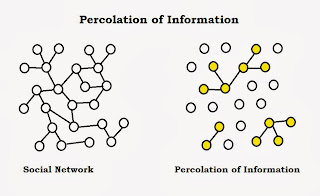Export driven economies fuel themselves through an
octane boost of information. Information makes their way into opportunity finding,
employment, and development. With the right methods of information transference
regions can further develop their export driving economies by understanding how
innovation fulfills demand-side and supply-side economics. Paul McPhee (2012)
explores innovation strategy information spillover contributions as an important
catalyst in simulating exports and employment.
Local development exists within a
national context. Local stakeholders and business members work together to
create development. Local networks and supply chains also rely on greater
information links in national networks to be successful (Bathelt, 2005). In other words, there exists the tighter
information transference within local networks and wider networks within the
nation. Even though the author doesn’t state this it can also include
information and resource vines throughout the globe.
This is demonstrated by
international organizations that seek investment locations that have assets,
organizational and institutional structures that support innovation information
that fosters development (Paniccia, 2002).
As a bounded rationality such organizations draw in this information to
create new products and services that have market relevancy. Without the
information sources full development is not possible due to a lack of
development feed.
We can find a number of examples
within the market. In Australia clusters formed from networks of regionally
based firms within the wine, fishing, film, education, and tourism industries
that collaborate and innovate collectively and individually through alliance, commissions,
federations, and associations (Roberts and Enright, 2004). Each industry has the opportunity to work
with other industries in both the local setting as well as the national setting
to create new products and services. Local clusters exist within a wider national
and international context.
The author found that information
transference fostered exportation of products and services. A process of
increasing the sourcing, generation, transferring, and sharing of information
within regional networks is necessary to increase export related employment.
This information is used for mutual development that impacts demand-side and
then export-side growth. When
information transference speeds up the opportunities from growth and exportation
also increase and this can lead to higher levels of regional employment.
Comment: The study lends support
to the concept that tighter formations of economic vines exist in clusters and
these clusters are woven into regional hubs that are connected to other hubs
both within a nation as well as across the globe. The success of local
economies is based in the ability to quickly and easily transfer information
and resources through their economic hubs. These hubs use their resources to create newer and better products.
Bathelt, H. (2005) Cluster
relations in the media industry: Exploring the ‘distanced neighbour’ paradox in
Leipzig. Regional Studies, 39, pp. 105-127.
McPhee, P. (2012). Export driven regional
development: a comparison of policies based on tiberi-vipraio-hodgkinson
innovation strategies and networked information flows. Australasian Journal of Regional Studies, 18 (1).
Pannicia, I. (2002) Industrial
Districts: Evolution and Competitiveness in Italian Firms, Edwards Elgar,
Cheltenham
Roberts, B. H. and Enright, M.
(2004) Industry clusters in Australia: Recent trends and prospects. European
Planning Studies, 12(1), pp. 99-121.
